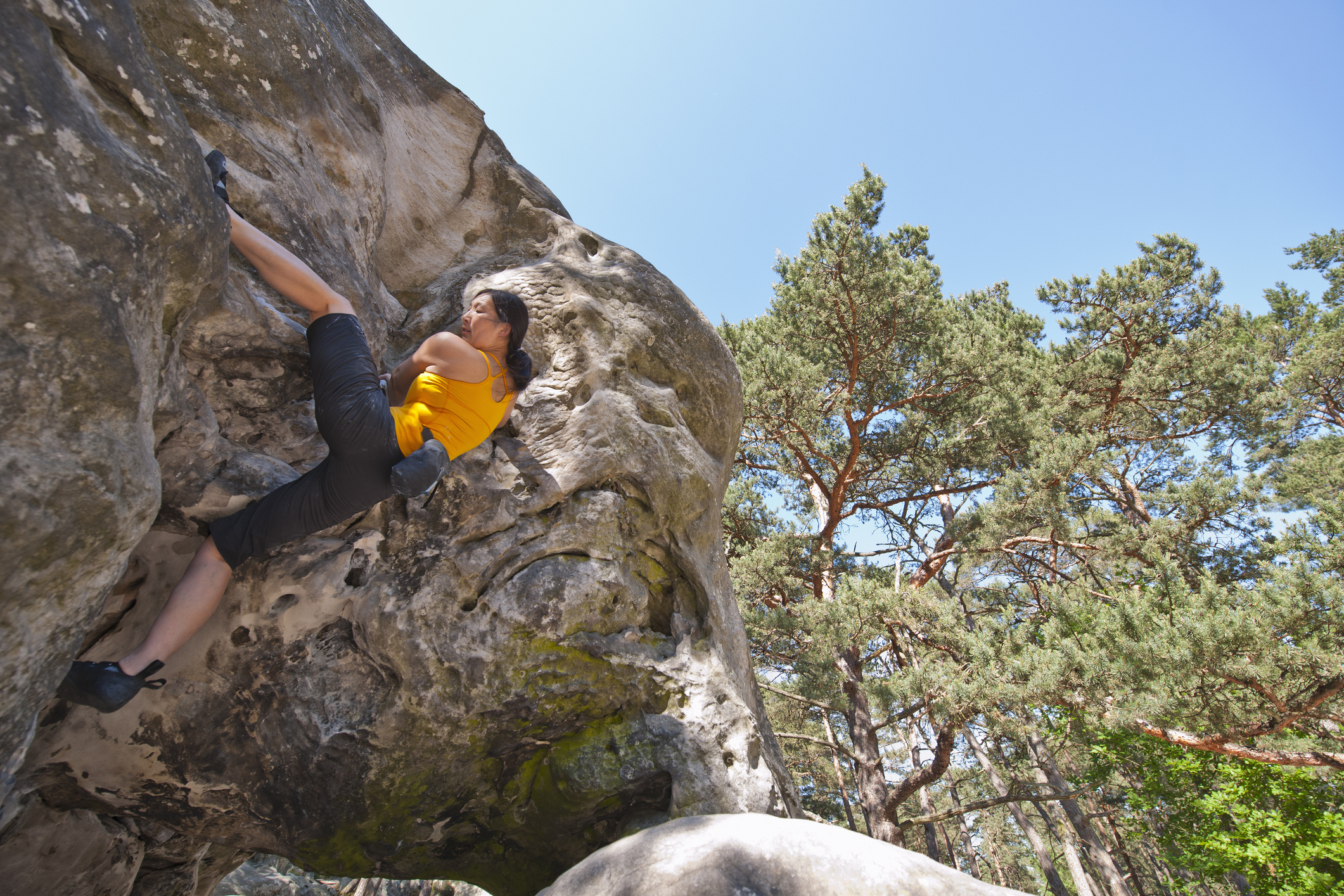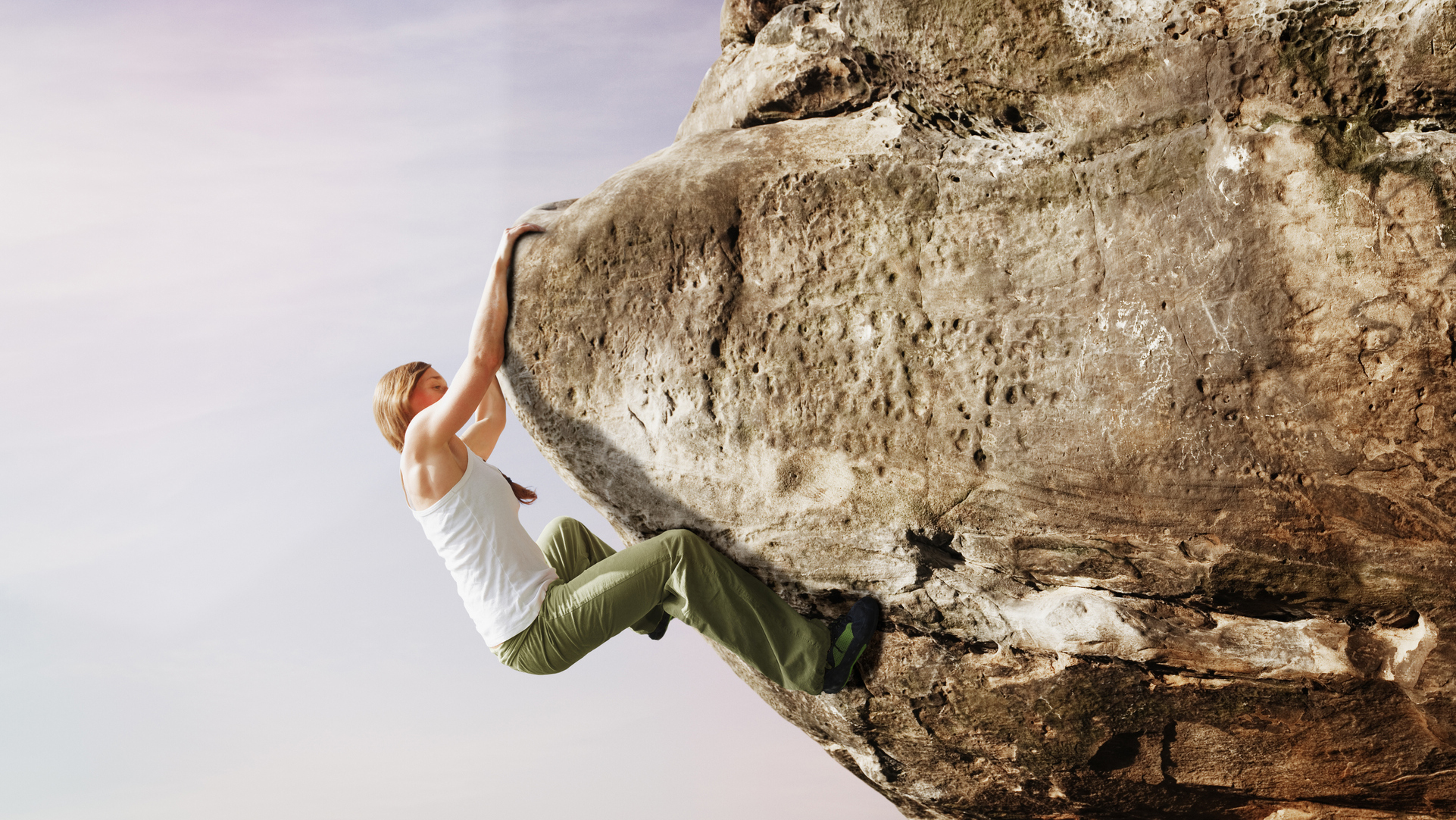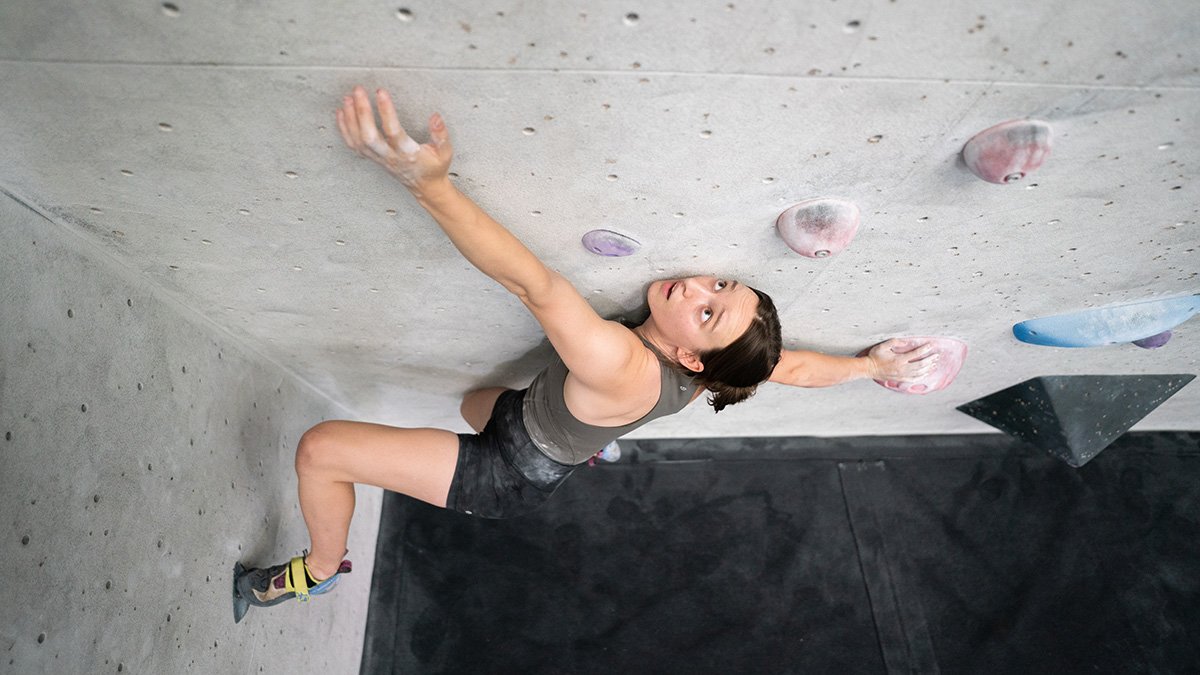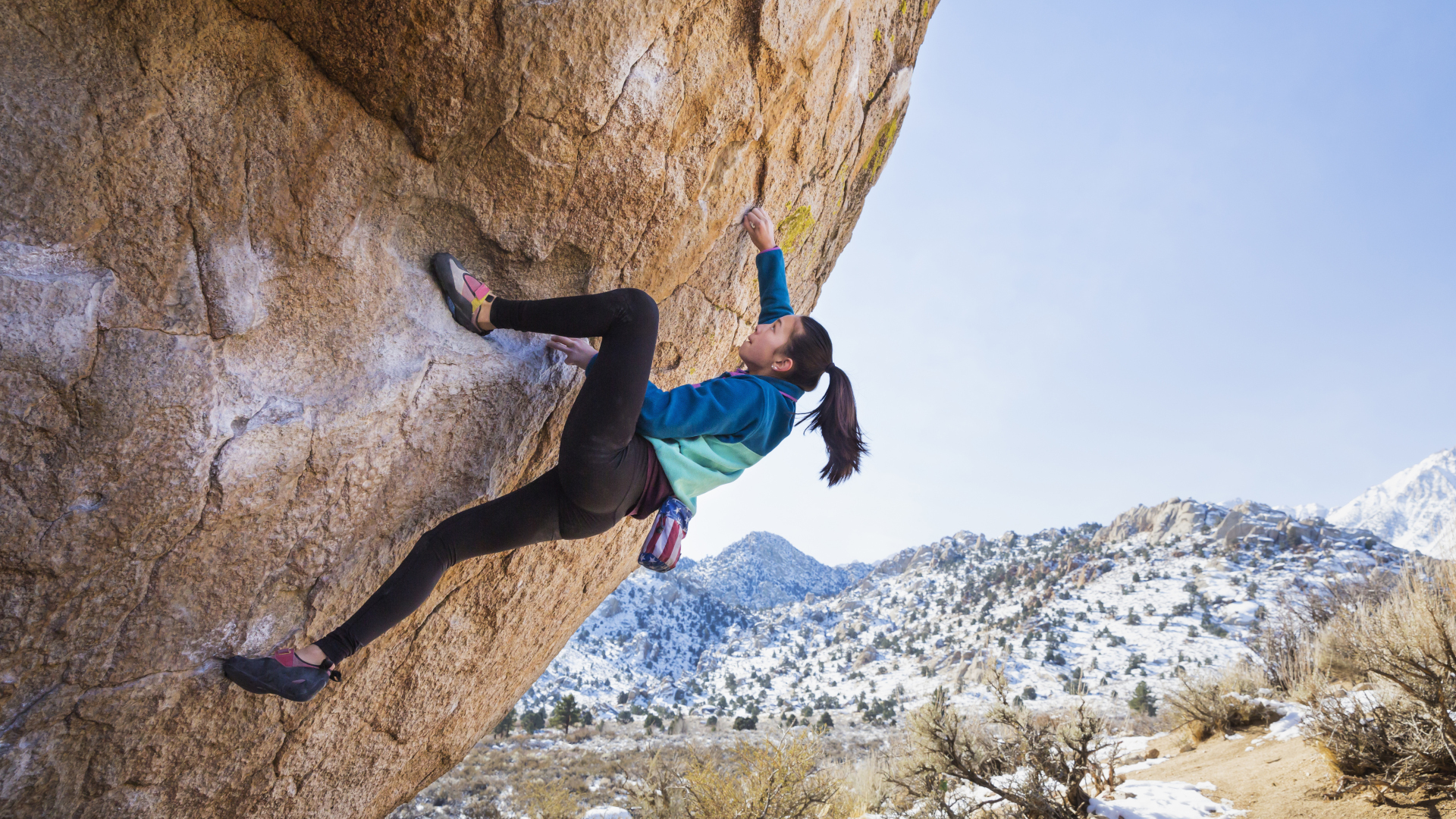
I distinctly remember, the first time I completed the traverse of Scotland’s famous Aonach Eagach, commenting that the many rock steps along the ridge were like little puzzles to solve. I was captivated by these actually very easy bits of climbing and, in considering them as puzzles, I’d glimpsed a little of what makes boulder problems so enthralling.
In reality, boulder problems are much more challenging than the individual rock steps on a scrambly ridgeline, as bouldering is all about technical prowess and piecing almost impossible moves together into a sequence. These difficult problems can take an age to build up to and overcome, often through a long process of trial and error and much physical exertion.
But what is a boulder problem exactly? We asked one of our climbing experts to define the term, consider the different types and reveal how they’re graded, as well as detailing the most difficult boulder problems ever sent.
What is a boulder problem?

A boulder problem is a sequence of climbing moves, usually of great technical difficulty, used to overcome a boulder or other rock feature. They’re the bouldering equivalent to a climbing route, though they’re obviously tackled without ropes and require technique, strength, balance and flexibility.
Boulder problems are graded for difficulty and are usually solved in a progressive manner, taking multiple attempts to overcome, hence the problem in the name. Different individuals may approach the same boulder problem in different ways, playing to their own strengths.
There are many kinds of boulder problems, including highball, lowball and traverses. Boulder problems are found outdoors on rock features and indoors on artificial walls, where the problems have been designed and use specifically colored holds.
Meet the expert
Types of boulder problem

Boulder problems come in many shapes and sizes and on different rock types. Cracks and slabs are common features on granite boulders, whereas sandstone formations are renowned for their overhangs and horizontal breaks.
Some boulder problems are traverses, less like a climb and more like a horizontal progression across a face or feature. Others take place in caves, often requiring the climber to progress at the kind of angles mere mortals would gawp at.
Highball bouldering entails longer and higher problems than lowball bouldering. A highball boulder problem typically demands a strong level of focus and physical fitness to overcome the multiple moves. It's generally accepted that around a height of 33 to 39ft / 10 to 12 meters is where bouldering ends and free soloing begins.
How are boulder problems graded?

As with other forms of rock climbing, such as trad or sport, bouldering has its own grading system, two in fact. There’s the American V Scale that, as you might guess, is used in the States. It’s also used across the Pond in the UK, despite Blighty being somewhat closer to where the other system originated: France. Yes, the Fontainebleau system predates the V Scale by a few decades and originated in the legendary Forest of Fontainebleau, to the southeast of Paris.
The American V Scale goes from V0 up to V17, which is currently the hardest bouldering grade. However, it’s open-ended, so we may see V18 and beyond in the future. Plus and minus signs are also often used to indicate nuances of difficulty within the grade. The V in the name stands for Verm or Vermin, the nickname of bouldering pioneer John Sherman who categorized boulder problems in Texas during the 1980s.
The Fontainebleau system has been in place longer than the V scale and works in a similar way, with the level of challenge indicated by ascending numbers. After Font 5, it gets a little more complicated, with a, b and c used to indicate the slight increases in challenge within a grade.
Up to V2 (Font 5+) is generally considered bouldering beginner territory, while up to around V6 (Font 7a) is classed as intermediate. Beyond V10 (Font 7c+) and you're into some seriously challenging bouldering, requiring focused training to master.
What are the hardest boulder problems in the world?
Less than ten boulder problems have been judged to attain the dizzying heights of a V17 (Font 9A) and, as of July 2023, only a handful of climbers have achieved the grade in bouldering's history.
Burden of Dreams in Finland was the first ever V17 (Font 9A) when it was climbed by Nalle Hukkataival in 2016. Part of his Lappnor project, it took Hukkataival four years to eventually conquer the almost impossibly difficult moves on the stunning, 45-degree overhang.
For five years, it stood as the only problem of its grade. However, from 2021 onwards, the floodgates opened...
Return of the Sleepwalker was sent by American Daniel Woods in April 2021. The problem contrasts with Burden of Dreams, in that it links a number of intricate sequences, rather than going all guns blazing on five of the most challenging moves imaginable. Located in Nevada's Black Velvet Canyon, it's arguably the toughest boulder problem in the States and built upon the preexisting Sleepwalker.
America's other V17 (Font 9A) is Megatron in Eldorado Canyon. Shawn Raboutou first climbed the problem in 2022 and it has yet to be repeated, though others have tried. This means that it's V17 status remains uncomfirmed. The problem was found by Chad Greedy and it adds several moves to Daniel Wood's Tron. It's not, as you might expect, named after the antagonist from Transformers, but after Chad's pet chameleon, who sadly passed away shortly after he'd discovered the problem. Whether or not the chameleon was named after the Transformer is something we're unable to confirm or deny.
A route that has seen several completions and another first sent by Shawn Raboutou, in April 2022, is Aphane in Switzerland. First discovered by Dave Graham more than twenty years ago, it may lay claim to being the first V17 to be attempted.
L'Ombre du Voyaguer (The Traveller's Shadow) was first sent by Charles Albert in October 2023. The roof crack route is tucked away in a cave near Geneva and it took Albert four years of work to unlock the problem.
Soudain Seul, first claimed by Belgian Simon Lorenzi in February 2021 and Backflip SDS, climbed by Russia's Vadim Timonov in May 2023, are also considered by some sources as V17 (Font 9A) routes. though multiple repeats are needed for these to be universally accepted into the club.
British climber Aiden Roberts also sent two potential V17 (Font 9A) routes in early 2024, with Spots of Time in the English Lake District and Arrival of the Birds in Chironico, Switzerland. Time will tell if these are fully accepted in the great V17 pantheon.







